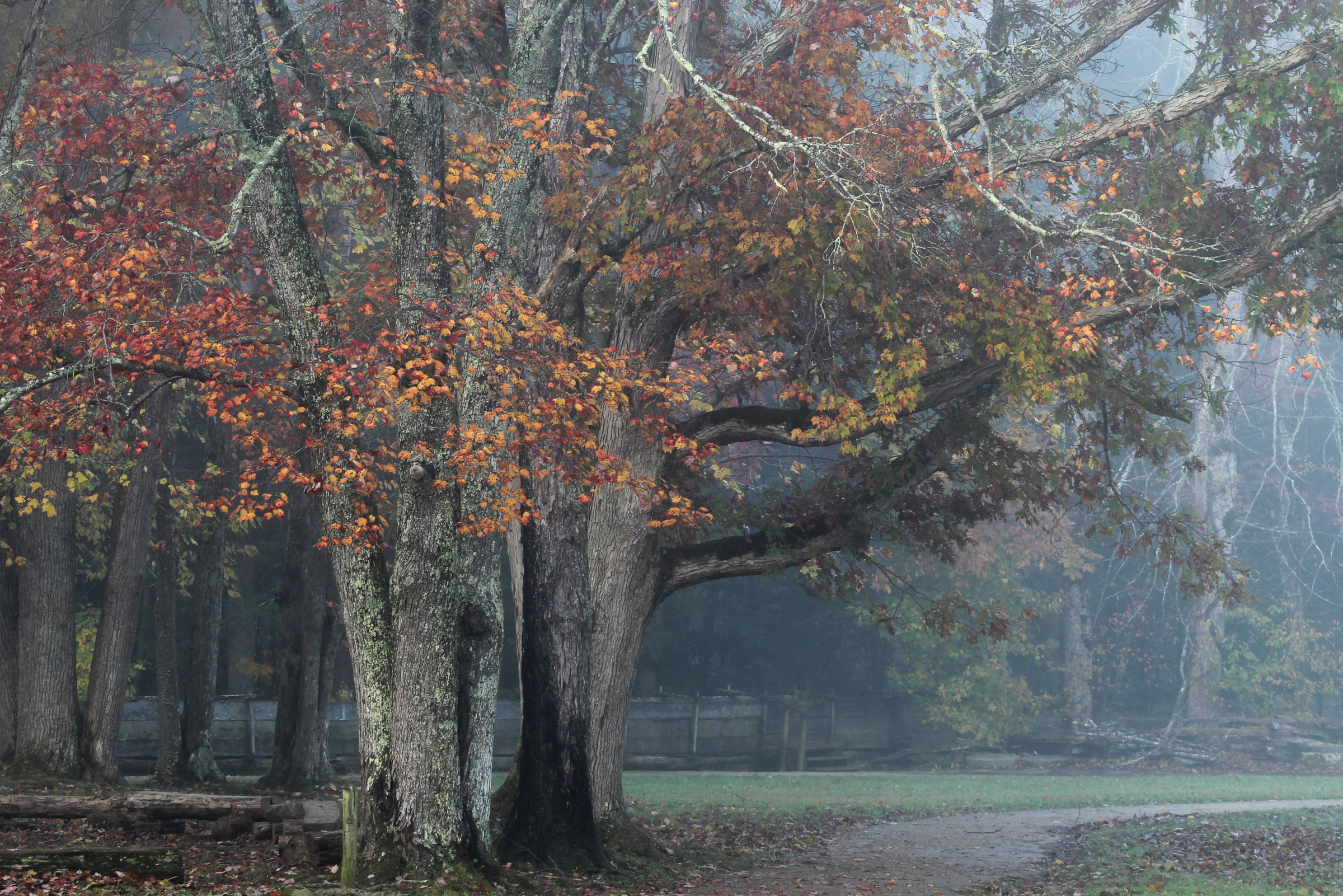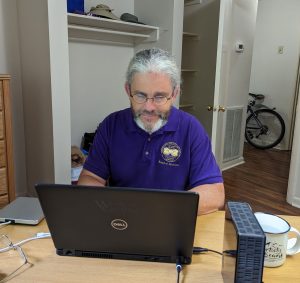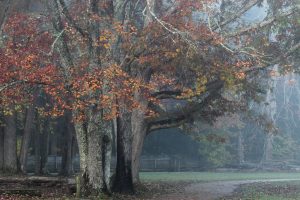
Editor’s Note: This essay is part of a series written during Railback’s stay in the park from June 22 to August 4, 2023.
I live at a place called Second Acts, in Great Smoky Mountains National Park. You will not find Second Acts on a map; this is the name I’ve given my home for six weeks in the summer of 2023. It’s a comfortable apartment in a small building just down the road from the Cades Cove Ranger Station.

My neighbors are a heavy equipment operator, interpretive ranger, and law enforcement officer—each of whom works in the park. They have well-defined roles, mine much less so. I am the 2023 Steve Kemp Writer in Residence, and I am here by virtue of the legacy of writer and editor Steve Kemp and the generosity of Great Smoky Mountains Association (GSMA).
Assisting me in all aspects of my stay is the GSMA Creative Services Director Frances Figart, who is Kemp’s successor in that role. It is a privilege to live as I do in Great Smoky Mountains National Park, which does not have in-park lodging facilities such as, say, Yosemite National Park. Here, visitors can hike up to the rustic LeConte Lodge or camp in the front or backcountry. My job is to write something that I hope will justify the amazing opportunity that has been given to me.
The name Second Acts comes from the famous F. Scott Fitzgerald quote, “There are no second acts in American lives.” It occurs in Fitzgerald’s notes while he worked on his unfinished novel, The Last Tycoon, published in 1941.
Scott did not believe the line himself. Having bottomed out in 1935 and ’36, when he lived off and on at Asheville’s Grove Park Inn, he went to Hollywood, where he worked as a screenwriter for MGM, lived in the famous Garden of Allah apartments, and counted people like Clark Gable, David Niven, and Jimmy Stewart as friends.
Scott knew that “The Love of the Last Tycoon,” as he called it, was his second act—a novel so good that it would give him a second life and allow him to escape his reputation as an alcoholic relic of the 1920s. But he lost the race with time that he understood he was running, unable to complete the book before his final heart attack on December 21, 1940. He was only 44. And yet, even the fragment of his great novel changed the trajectory of his posthumous literary career; instead of being forgotten, Fitzgerald became, as he hopefully wrote years before, an author who writes “for the youth of his own generation, the critics of the next, and the schoolmasters of ever after.”

Like most writers, my story is not as successful or glamourous as Fitzgerald’s. My first novel, The Darkest Clearing, published in 2004, met with encouraging reviews, and my editor told me it was selling well. Then things went awry. Publicity for the book tour disappeared. (I once sat alone at a book signing, my only visitor the shop’s large black cat that sat on my signing hand—there was no reason to move it.)
At the 2004 Southern Independent Booksellers Alliance, my little novel seemed to be a hit, and booksellers lined up to pick up a free signed copy. Unfortunately, none of my books had arrived, and thus I had no copies to sign. The waiting booksellers were annoyed, so I took my name card down and pretended to be an assistant of the author sitting next to me.
I eventually discovered that my publisher had been destroyed in a lawsuit, the editorial offices disbanded. I never received one penny in royalties. Although I won the Prose for Papa (Hemingway) Short Story Award in 2006, the damage was done. I published scholarly essays instead of fiction and threw myself into work as an administrator at Western Carolina University.
And yet.
Here I am. A few years ago, my wife, Sandy, and I saw a black bear sitting along the highway, apparently oblivious to all the cars and trucks hurling by. We wondered, What is that bear thinking? From there, I imagined what it would be like to be a bear in the 21st century. I started writing a novel and shared it with other writers at the Bread Loaf Writers’ Conference in 2022. The response to my fragment seemed positive.

The next step, according to Alexander Chee, the author who mentored me there, was to find a residency or writer’s colony where I could write. What could be better than the Kemp Writer’s Residency, where I would live in Great Smoky Mountains National Park and, thanks to introductions by Kemp and Figart, talk about the habits of bears with park wildlife experts? What could be better than living at Cades Cove, where the highest concentration of humans and bears in the United States must somehow co-exist?
I am here to finish “Peter Quince Becomes a Bear,” a novel about a man turned into a bear and his wife, obsessed with tracking down and killing the bear that she believes killed her husband. The bear that is, in fact, her husband. To make the best use of my six weeks, I must finish the first draft of the book. I have come to disconnect from the troubling world (there is no TV, streaming, or cell service in my apartment). I have come to immerse myself in the astounding beauty of the park, to discover the peace necessary to write, and above all to find inspiration from Nature.
I am not alone. Over 10 million people each year come to the Great Smoky Mountains National Park for all that it has to offer. On my first day, I am among a crowd huddled at the Cades Cove Campground Store and Bike Rental, looking out at a howling rain, with licks of lightning and endlessly rumbling thunder all around. Everyone standing by me, from the giggling children to the expectant seniors, peers beyond the flooded parking lot out toward the woods. We know the rains will stop, the clouds will slide over the horizon, and then the cool, clean, dripping forest will wait for us.
We lean toward it, ready to go.
Subscribe to get the latest posts sent to your email.
The Great Smokies Welcome Center is located on U.S. 321 in Townsend, TN, 2 miles from the west entrance to Great Smoky Mountains National Park. Visitors can get information about things to see and do in and around the national park and shop from a wide selection of books, gifts, and other Smokies merchandise. Daily, weekly, and annual parking tags for the national park are also available.